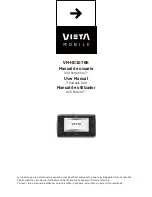
11
Put a carriage bolt through the hole in the
hinged arm that is connected to the left
side rail. First slide the large washer and
then the two small washers onto the
carriage bolt.
Place the back part onto the protruding
lower side rails and guide the carriage bolt
of the hinged arms through the ball
bearings of the left upright.
Hold the hinged arm and the upright and,
using a hammer, tap the head of the
carriage bolt until there is sufficient thread
showing through the ball bearing to put the
cap nut onto the bolt. Tighten the cap nut
with the 13 mm wrench.
Install the remaining two carriage bolts
from hardware bag # 1 onto the other
hinged arm. Pay particular attention to the
position of the small holes; the hinged
arms need to be mounted opposite to one
another (in mirror image to each other).
Slide the large washers and then the two
smaller washers onto both carriage bolts.
Slide the bolts, through the ball bearings of
the side rail and at the same time through
the ball bearings of the right upright of the
back part.
Tighten the assembly with the cap nuts.
Summary of Contents for Octado
Page 2: ......














































